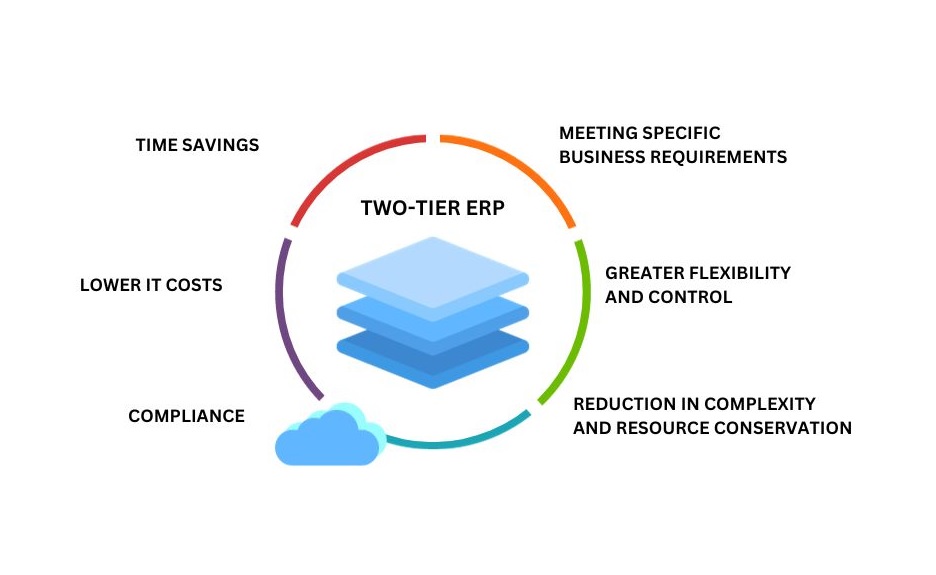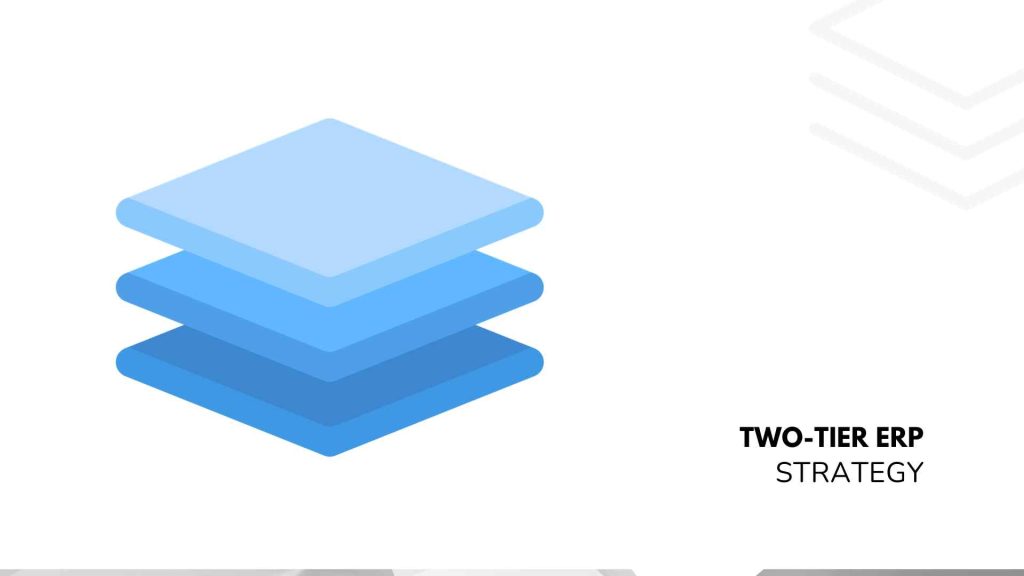In the dynamic realm of modern business operations, the pursuit of a streamlined, comprehensive approach to managing enterprise resources while accommodating diverse operational needs has led to the emergence of the Two-Tier ERP Strategy. This innovative and strategic approach challenges the conventional one-size-fits-all model by introducing a subtle methodology that involves a two-level ERP system.
At its core, the Two-Tier ERP Strategy embraces the idea of combining a centralized Tier 1 system with secondary, often specialized Tier 2 systems. This introduction to a dual-layered ERP strategy signifies a pivotal shift in how organizations can maintain standardized control at the top tier while enabling tailored, agile solutions at the lower tier to meet the unique requirements of specific business units or subsidiaries. This comprehensive guide seeks to explore the intricacies and benefits of this approach, shedding light on its differences from traditional ERP models and elucidating its potential impact on contemporary business landscapes.
Differences between Tier 1 ERP Strategy and Two-Tier ERP Strategy
Tier 1 ERP Strategy
Tier 1 ERP involves a centralized, comprehensive system that caters to all facets of an organization’s operations. It is typically an expansive, monolithic system designed to manage the entire enterprise. These solutions are robust, offering standardized processes across different departments and locations.
Two-Tier ERP Strategy
On the other hand, the Two-Tier Strategy involves a two-level approach. The top tier consists of a primary, often Tier 1, ERP system that manages core enterprise-wide functions. The lower tier involves secondary, often smaller, specialized ERP systems catering to specific business units or locations. This approach allows for greater flexibility, customization, and scalability for individual unit requirements while maintaining centralized control at the top tier.
Use Cases of Two-Tier ERP Strategy in Companies
Companies operating in diverse industries with varied operational needs often benefit from a Two-Tier ERP Strategies. For instance, global enterprises with multiple subsidiaries or decentralized business units, retail chains with distinct store formats, or manufacturing companies with different production processes across regions find this strategy advantageous.

Benefits of a Two-Tier ERP Strategy
The Two-Tier ERP Strategies offers numerous advantages:
- Flexibility and Customization: Allows tailored solutions for specific business units or geographies.
- Scalability: Enables the organization to expand or contract individual systems as needed.
- Cost-Efficiency: Lower implementation and maintenance costs for smaller, specialized systems.
- Speed and Agility: Enables quicker deployments and adaptations for subsidiary or unit-specific needs.
Approaches to Two-Tier ERP Strategy
Two common approaches include:
- Integration Approach: Focuses on seamless communication between the primary and secondary ERP systems.
- Independence Approach: Allows more autonomy for the lower tier systems, with limited integration with the primary ERP.
Who Can Benefit from a Two-Tier ERP Strategy?
Organizations with complex structures, decentralized operations, or those seeking agile solutions for specific business units within a broader framework can benefit from this strategy.
Is a Two-Tier ERP Strategy Right for You?
The suitability depends on the organization’s structure, needs, and willingness to manage multiple ERP systems. Assessing the specific requirements of various business units is crucial in determining if this strategy aligns with your company’s goals.
Why Would You Consider a Two-Tier ERP Strategy?
Companies opt for this strategy to balance standardization and customization, gain agility, and address diverse needs while maintaining centralized control. It fosters innovation and responsiveness to market changes within a structured framework.
Options for a Two-Tier ERP Strategies
Options range from using a mix of Tier 1 and Tier 2 ERP systems from the same vendor to employing specialized systems from different vendors for each tier. Customization and integration capabilities play a pivotal role in determining the best approach.
In conclusion, the Two-Tier ERP Strategy offers a middle ground between uniformity and customization, catering to the varied requirements within complex organizations. Assessing the specific needs and considering the trade-offs is crucial in determining whether this strategy aligns with a company’s objectives. Ultimately, it is a strategic approach to meet the challenges of a multi-faceted, globalized business landscape.

Vijay comes with a vast experience in ERP and enterprise solutions space with about 20 years of experience in various packaged application like Acumatica, SAP, Orion, Salesforce.com, SugarCRM and, SalesLogix.

